Defining the DomainUsing Event StormingBarry S. StahlSolution Architect & Developer@bsstahl@cognitiveinheritance.comhttps://CognitiveInheritance.com |
 |
Favorite Physicists & Mathematicians
Favorite Physicists
Other notables: Stephen Hawking, Edwin Hubble |
Favorite Mathematicians
Other notables: Daphne Koller, Benoit Mandelbrot |
Some OSS Projects I Run
- Liquid Victor : Media tracking and aggregation [used to assemble this presentation]
- Prehensile Pony-Tail : A static site generator built in c#
- TestHelperExtensions : A set of extension methods helpful when building unit tests
- Conference Scheduler : A conference schedule optimizer
- IntentBot - A microservices framework for creating conversational bots on top of Bot Framework
- LiquidNun : Library of abstractions and implementations for loosely-coupled applications
- Toastmasters Agenda : A c# library and website for generating agenda's for Toastmasters meetings
http://GiveCamp.org


Event Storming

|
A process for modeling a business domain from the perspective of the business experts |
Why Event Storming?
- We Learn Things
- Improved Understanding of the Problem
- Better Naming of Objects and Operations
- Separation of similar but different concepts
- Not Big Design Up-Front
- Good Understanding Up-Front
Modeling the Domain
- As the Business Sees It
- Implementation Agnostic
- Not storage-centric
Event Storming Output

|
|
Domain Driven Design (DDD)
Practices for designing systems from components that are highly cohesive but loosely coupled
Cohesion
A measurement of the strength of the relationships within a component
- Operations
- Data
How closely the data and the operations on that data match within the context of the component
Coupling
A measurement of the strength of the relationships between components
- Operations
- Data
The greater the coupling between components, the more likely we are to have to change one as a result of a change to the other
Application TCO
|
 |
Loose Coupling Reduces TCO
|
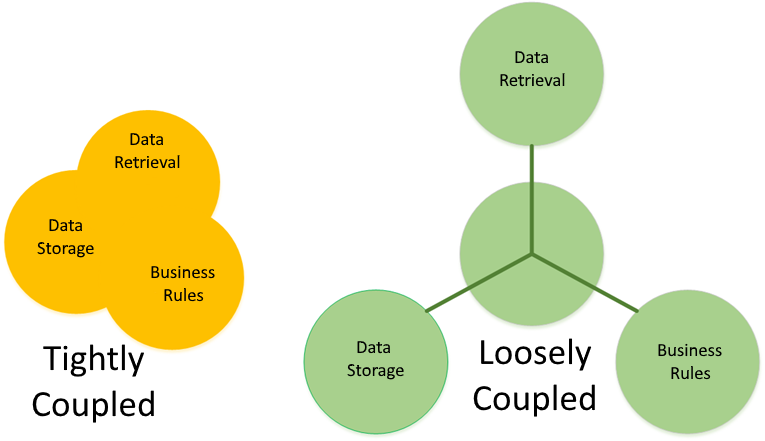 |
Domain Object
A representation of a real-world entity in software
- Meaningful to the business users
- Encapsulates both state and behavior
Bounded Context
A singular viewpoint on the facts and circumstances surrounding a Domain Object
- Flight
- Traveler's perspecive
- Departure & Arrival Times & Locations
- Class of Service & Seat
- Loyalty Miles
- Gate Agent's perspective
- Number of passengers
- Boarding Time
- Crew Members
- Traveler's perspecive
Ubiquitous Language

Aggregate (n)
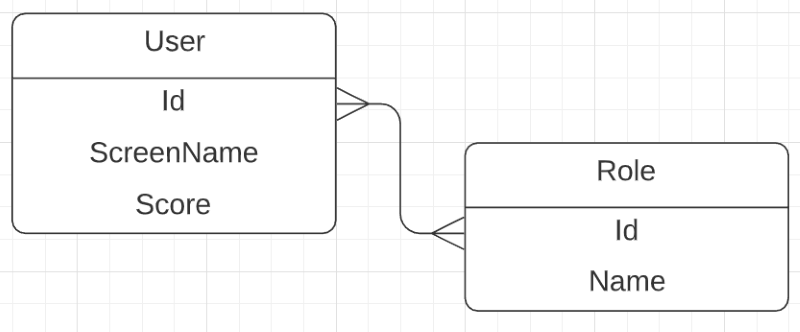
A cluster of domain objects that can be treated as a single unit
Domain Events

|
|
Some Domain Events
- Item Added to Inventory
- Flight Scheduled
- Video Uploaded
- User Logged-In
The 4 Steps in Event Storming
- Collect Domain Events
- Refine Domain Events
- Track Causes (Use-Case Modeling)
- Aggregation (Sub-System Modeling)
Our Problem Domain - Q&A

The Q&A Domain
Access from Behind the Corporate Firewall only
- Using the Company SSO solution only
Users Can:
- Search for Questions and Answers
- View details of a Question and its Answers
- Ask a Question
- Answer an existing Question
- Comment on existing questions and answers
- Report an existing Question, Answer or Comment
Activity can impact reputation
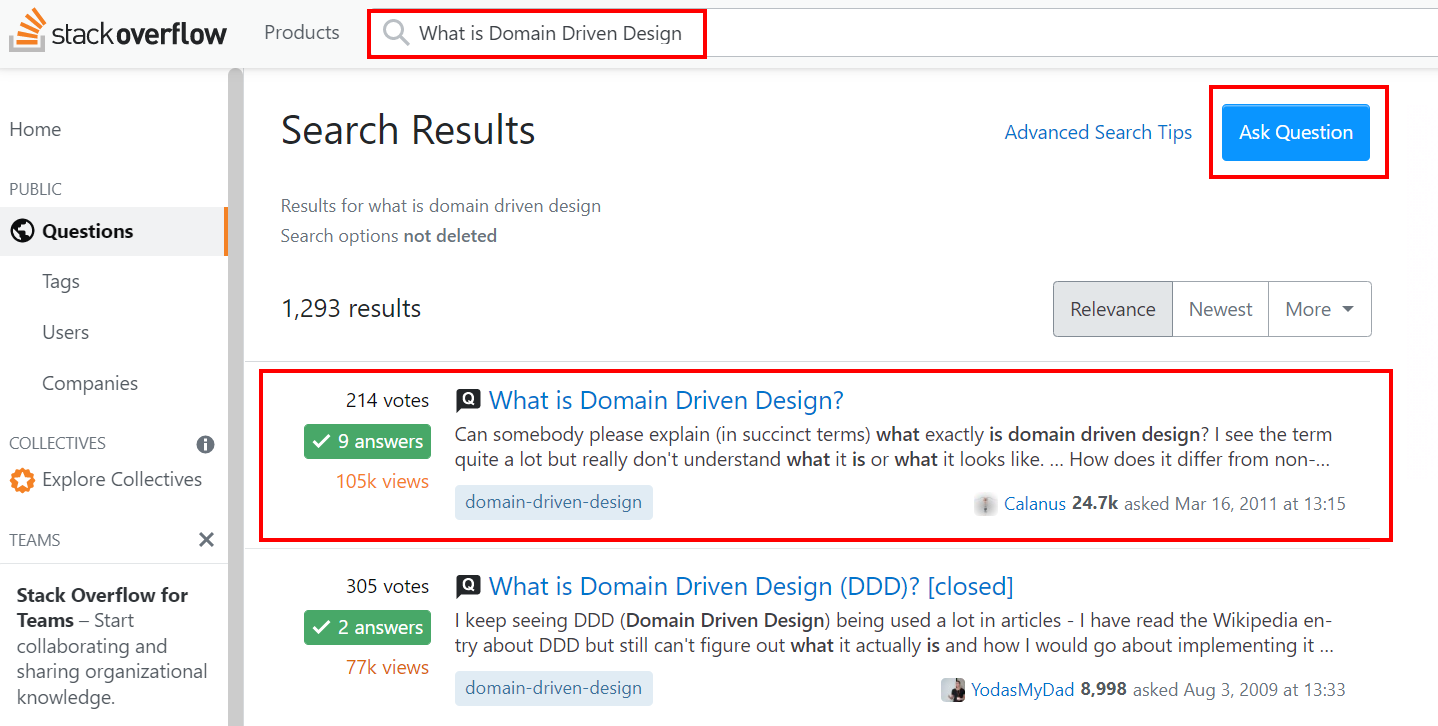
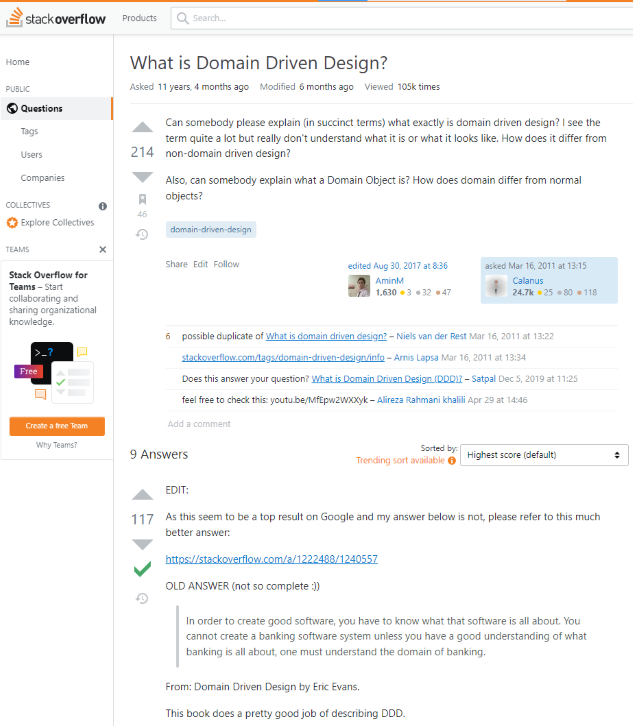
The Q&A Domain
Access from Behind the Corporate Firewall only
- Using the Company SSO solution only
Users Can:
- Search for Questions and Answers
- View details of a Question and its Answers
- Ask a Question
- Answer an existing Question
- Comment on existing questions and answers
- Report an existing Question, Answer or Comment
Activity can impact reputation
Step 1 - Collect Domain Events

|
|
"Infinite" Design Surface

Events Collected
Notable Events
- User Logged-in
- Question Asked
- Question Answered
- Answer Upvoted
- Comment Submitted
Interesting Issues
- Can a question be edited?
- Can a comment be upvoted?
- What happens with duplicates?
- What is actually searched for?
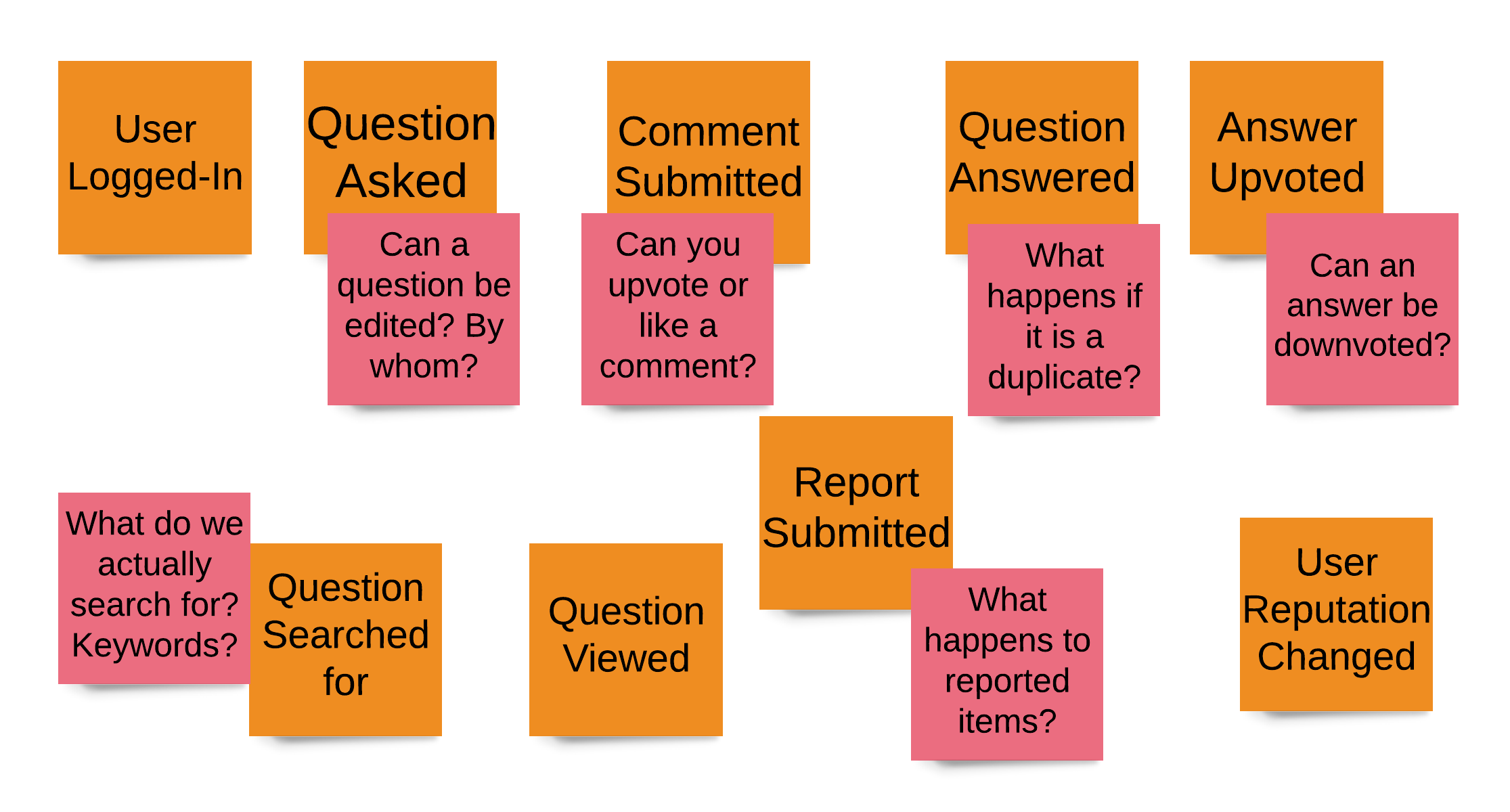
Step 2 - Refine Events
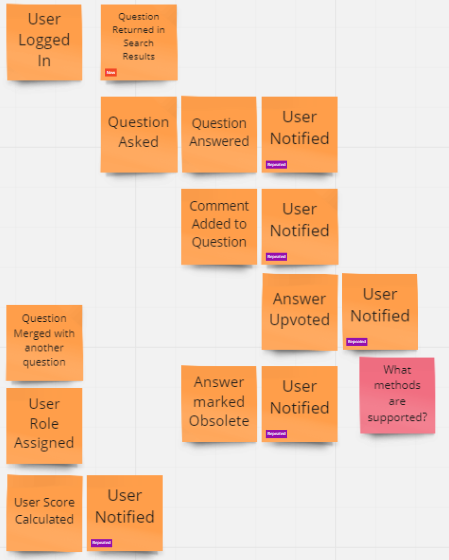
|
|
Events Refined
Notable Changes
- Events roughly ordered
- Added Question Removed event
- Added Report Completed event
- Filled-In Ubiquitous Language document
Issues Resolved
- Questions can not be edited -- comment instead
- No upvotes of comments or questions (perhaps future)
- Searches are for keywords and phrases
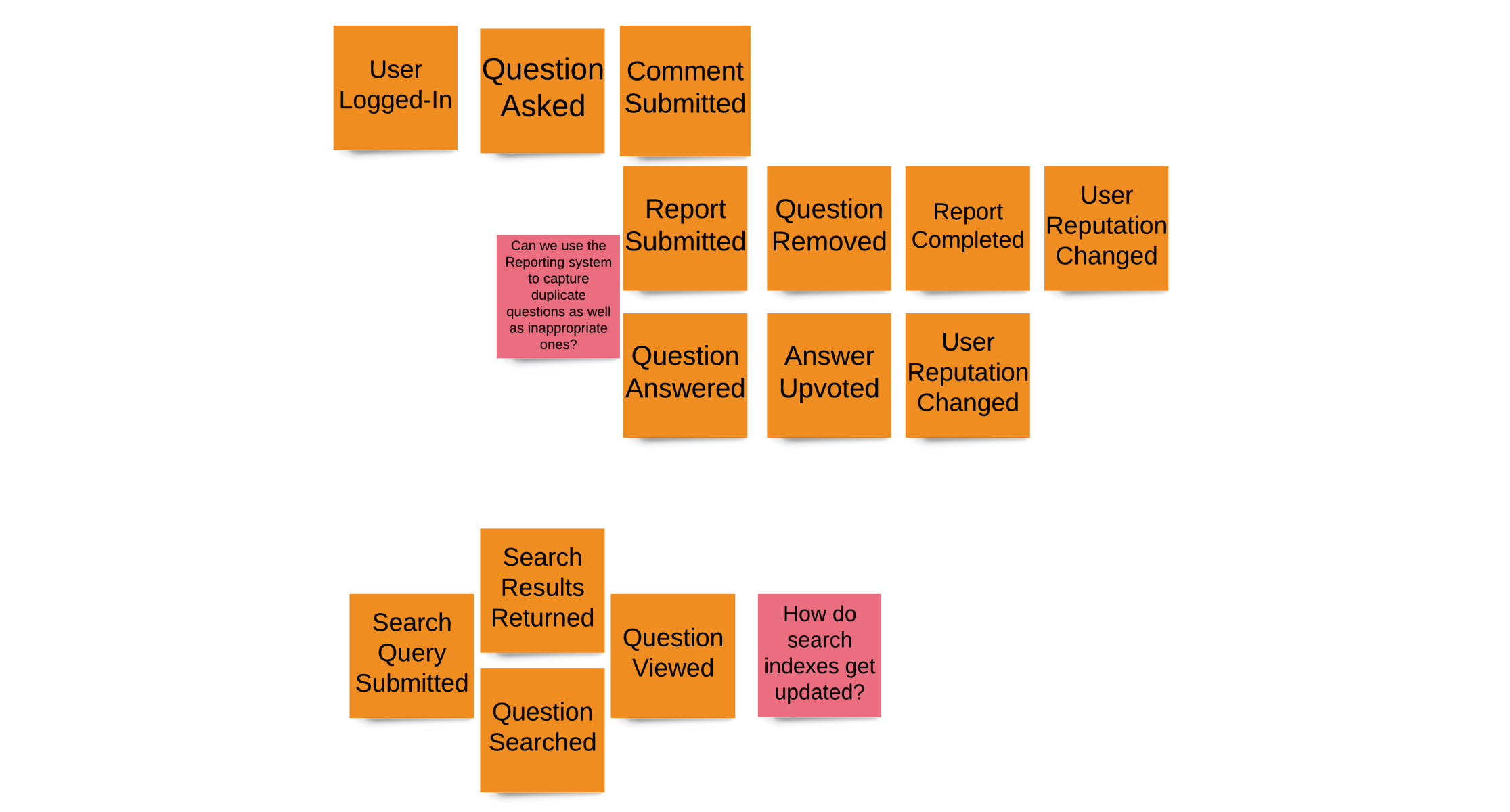
Step 3 - Track Causes
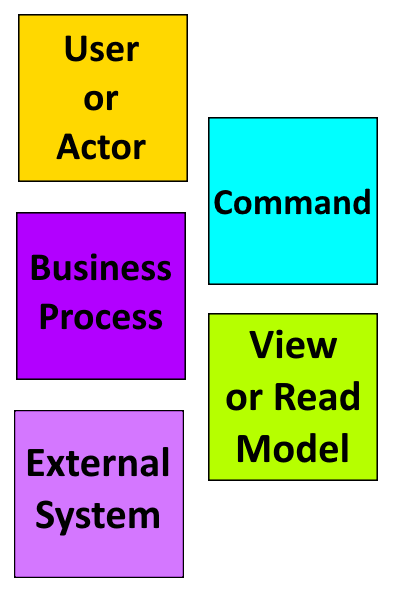
|
|
After Tracking Causes
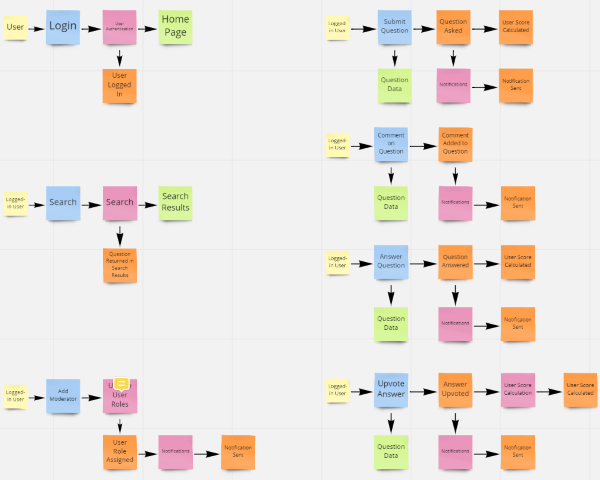
|
|
Causes Tracked
- Notable Flows
- User log-in
- Search
- View Question
- Ask Question
- Answer Question
- Submit Comment
- Submit Answer
- Upvote Answer
- Report Question
- Remove Question
- Close Report
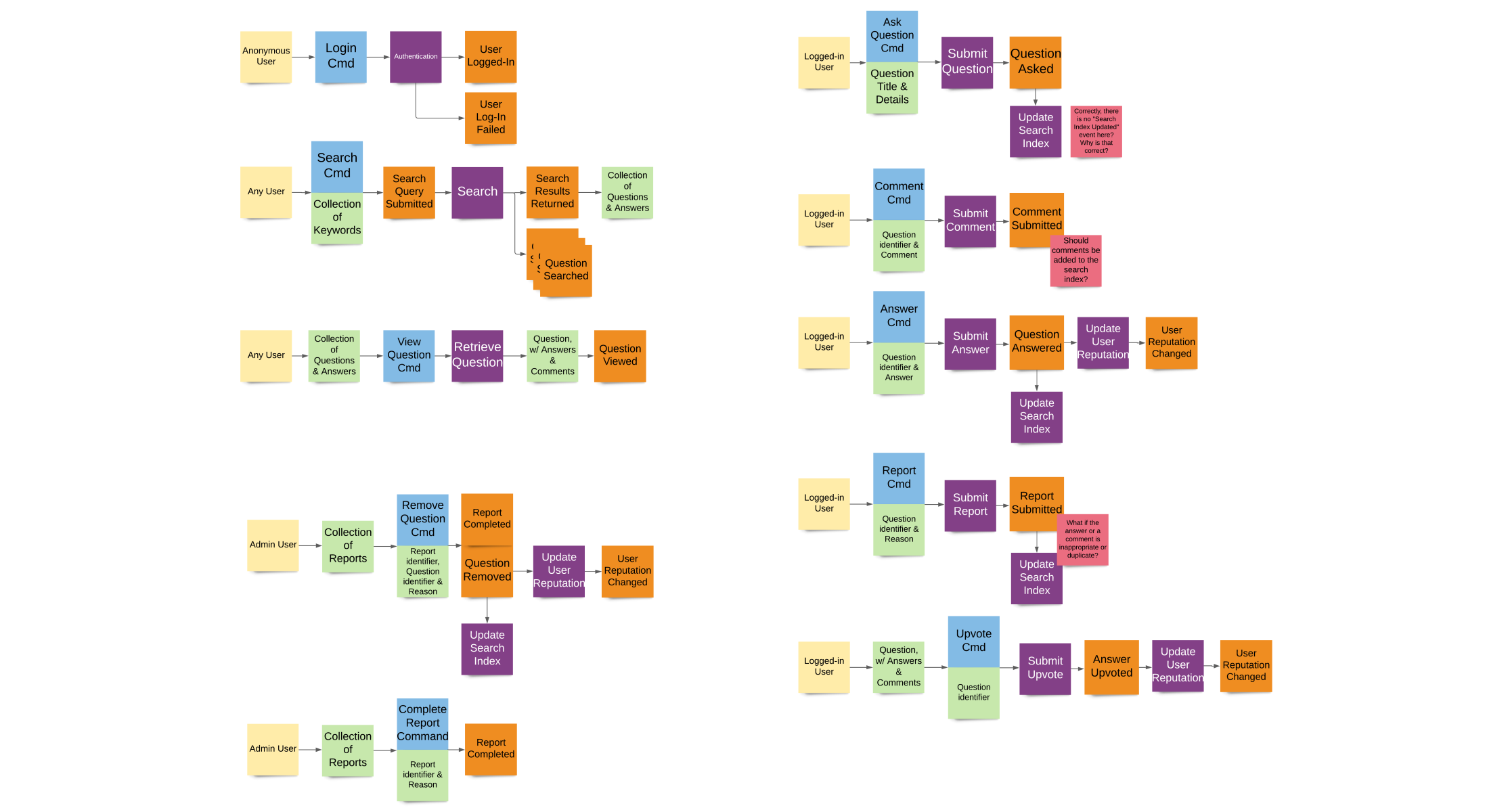
Step 4 - Aggregate (v)
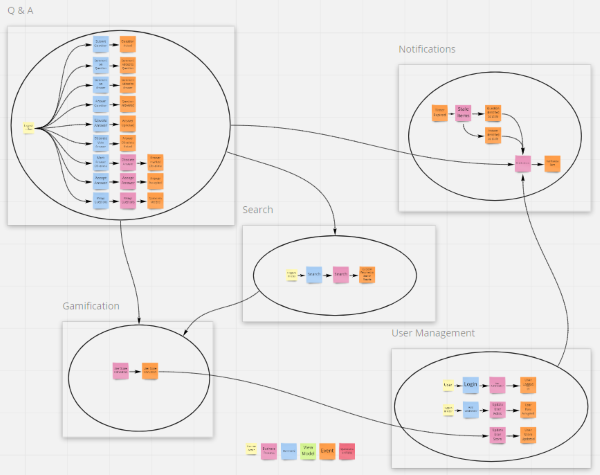
|
|
Aggregates Aggregated
- Notable Aggregates
- User
- Report (moderation)
- Search
- Comment
- Question
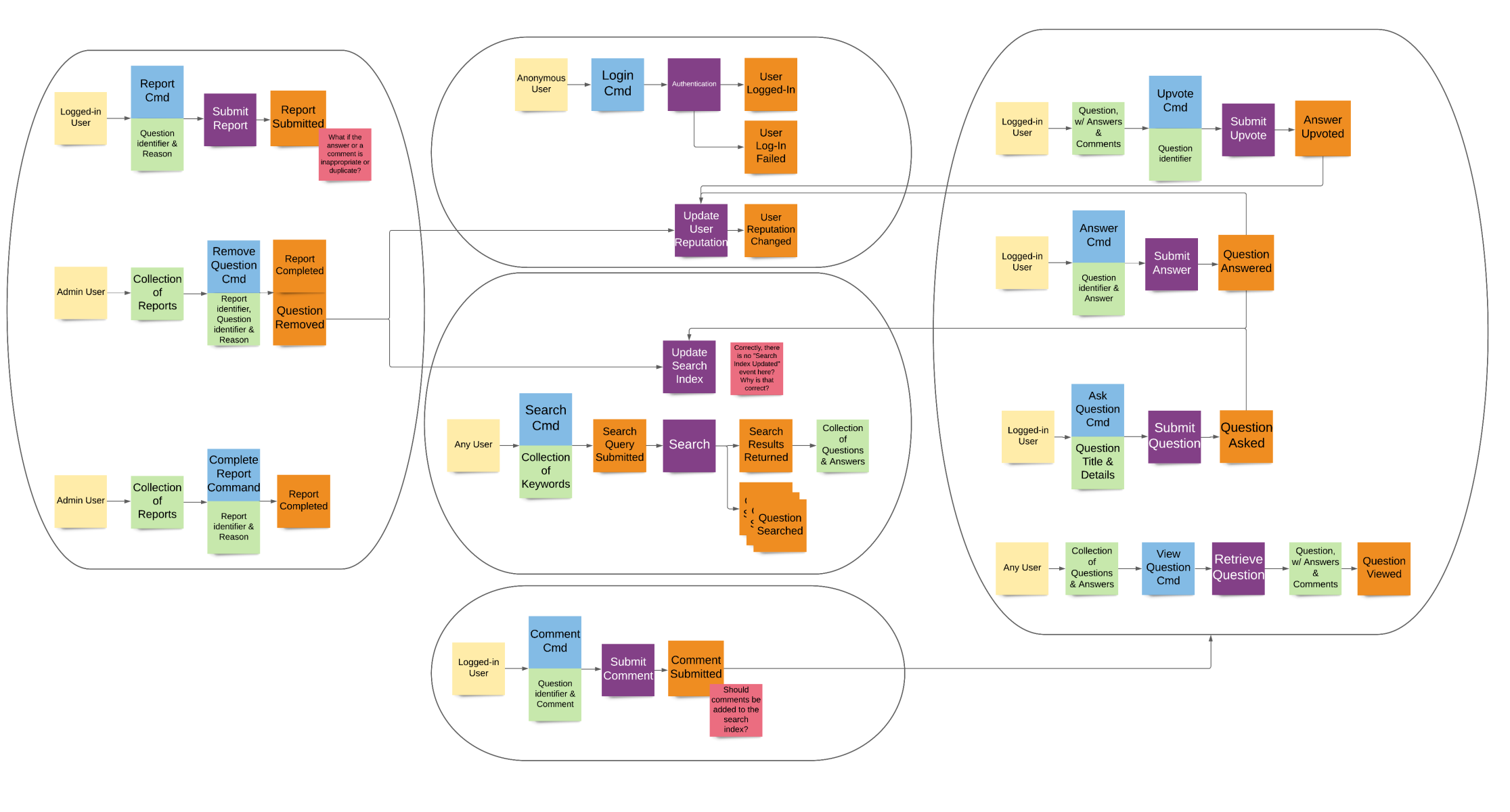
Recommendations

Block the Time Up-Front
- Size and complexity of the domain
- Number and the assertiveness of participants
Start In-Person then Go Virtual
- Step 1 = many conversations
- Steps 2-4 = 1 conversation
You'll need to be able to transfer the physical surface to a virtual whiteboard
Have a Facilitator
- The loudest voices should be from the business
- Technical voices should not be authoritative
Don't Fall in Love with the Model
- It will hopefully be improved on
- It will almost certainly change
Update the Ubiquitous Language Often
- Facilitators - call attention to the UL often
- Use a spreadsheet for sortability
Drawing Semantics are Not Critical
- There is no "right way" to draw these pictures
- Understanding is the important thing
Summary of Recommendations
- Block the time up-front
- Start in-person, then go virtual
- Have a facilitator
- Don't Fall in Love with the Model
- Update the Ubiquitous Language often
- Drawing semantics are not critical
Summary
- Modeling process from the perspective of the business experts
- Collect Events
- Refine Events
- Track Causes
- Aggregation (Sub-System Modeling)
- Powered by Domain Events
- Triggered by Users, Business Processes and External Systems
- Supported by Commands and Read Models
- Produces
- Visual Model of the Domain
- Ubiquitous Language
- Shared Understanding
Resources
